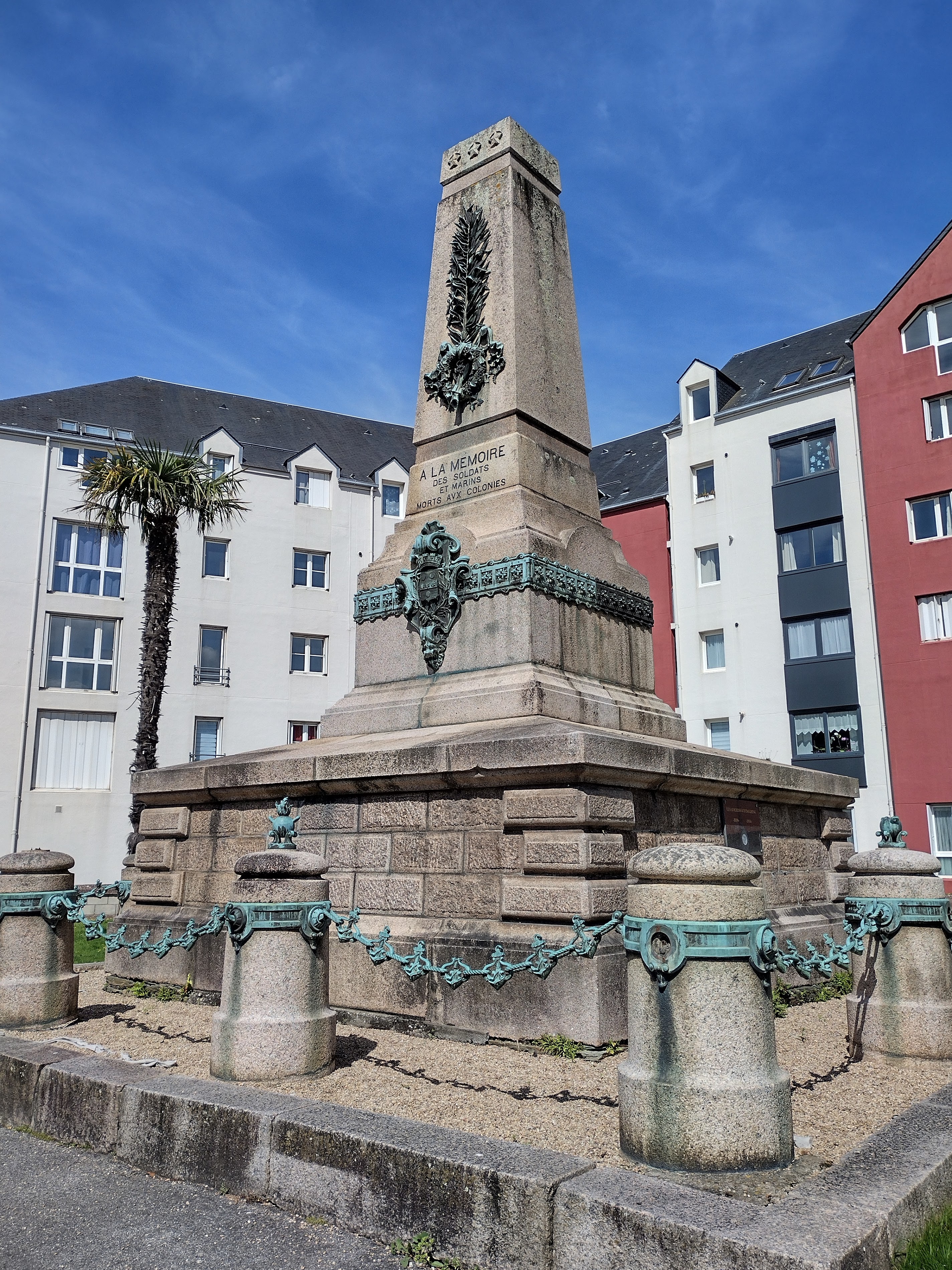Honoring Sacrifice at Monument à la mémoire des soldats et marins morts aux colonies
In the historic city of Cherbourg-en-Cotentin, a poignant tribute can be found dedicated to those who served and lost their lives in distant lands. The Monument à la mémoire des soldats et marins morts aux colonies stands as a powerful reminder of sacrifice and bravery. With its towering structure and intricately carved details, this monument resonates with visitors, evoking a sense of reflection and gratitude.

A Symbol of Remembrance
Constructed in the early 20th century, this striking monument commemorates the soldiers and sailors who made the ultimate sacrifice during colonial conflicts. Its imposing presence in the city serves not only as a memorial but also as a historical marker, connecting Cherbourg's past with the wider narratives of France's colonial ambitions. The craftsmanship displayed in the monument's design reflects the artistic values of the time, showcasing intricate sculptures and inscriptions that tell stories of valor and loss.
Visitors often pause to take in the monument's grandeur, with the surrounding gardens providing a serene atmosphere for contemplation. The lush greenery and well-maintained pathways create an inviting space where moments of silence can be observed. Here, the weight of history is felt, and the sacrifices of those honored are remembered anew.
Things to do in Cherbourg-en-Cotentin
Community Engagement and Education
The significance of the monument extends beyond mere commemoration. Educational programs and guided tours are offered, allowing visitors to engage with the history surrounding the conflicts that shaped the lives of many. Local historians often share insights into the stories of individuals who served, humanizing the sacrifices made. This connection fosters a deeper understanding of the complexities of colonialism and its lasting impact on both the soldiers’ home country and the lands in which they fought.
On special occasions, ceremonies are held at the monument, inviting community members to gather and honor the fallen. Such events emphasize the importance of remembrance and reflection, reinforcing the community's commitment to recognizing the contributions and sacrifices of its citizens. The monument thus serves as a focal point for collective memory, ensuring that the legacies of those who served are not forgotten.
Connections to the City
As one takes in the monument, the surrounding area of Cherbourg-en-Cotentin offers a rich tapestry of attractions that highlight the city’s historical and cultural significance. Nearby, the Thomas Henry Museum showcases an impressive collection of art and artifacts, providing further context to the city’s past and its connection to broader historical themes. Walking through the museum, the narratives of local history intertwine with the stories etched into the monument, allowing for a comprehensive understanding of Cherbourg's evolution.
Additionally, the vibrant port area invites exploration, with bustling cafes and shops contributing to the lively atmosphere. This blend of historical significance and modern life creates a dynamic environment where visitors can appreciate both the past and present of Cherbourg-en-Cotentin.
A Journey of Reflection
Ultimately, a visit to the Monument à la mémoire des soldats et marins morts aux colonies offers a meaningful experience that resonates long after one departs. It serves as a reminder of the fragility of life and the importance of honoring those who have fought for their country. The stories embedded in the monument continue to inspire conversations about courage, loss, and the complexities of history.
In the heart of Cherbourg-en-Cotentin, this monument stands not only as a tribute but also as a call to remember and reflect on the sacrifices made by those who came before. It invites each visitor to engage with the narratives of the past while exploring the vibrant life of the city, including other destinations that enrich the experience, such as Thomas Henry Museum.

 Home
Home Wishlist
Wishlist